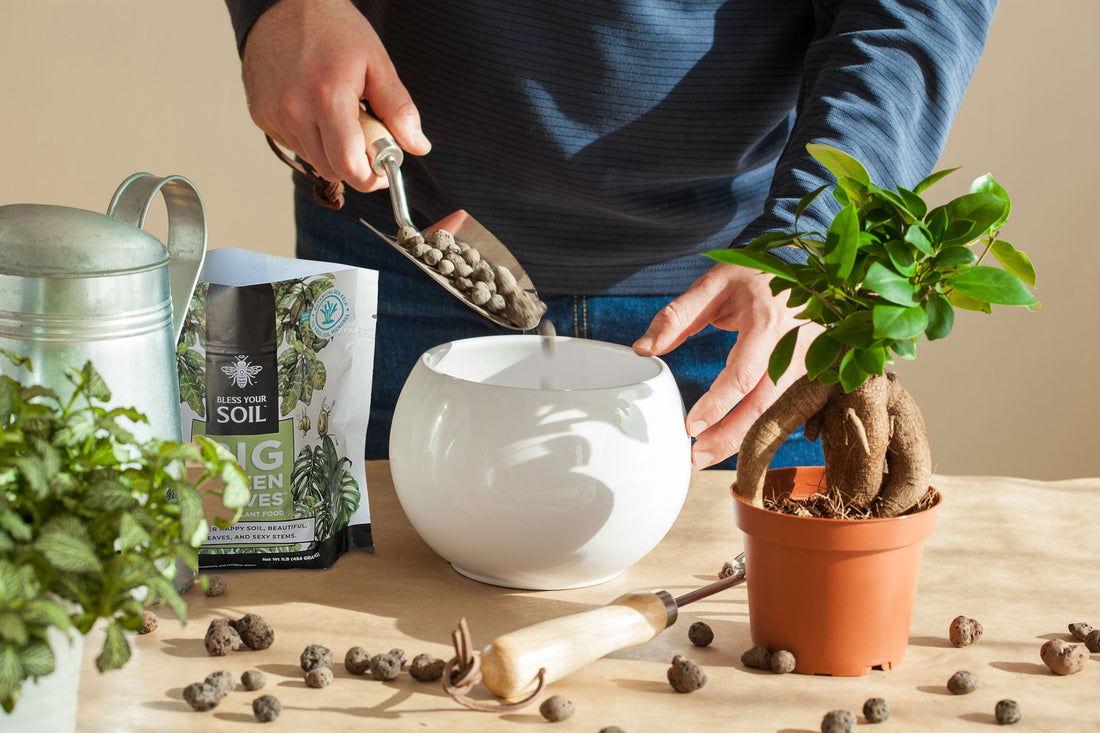
Hey there, plant lovers! Today, we're going to explore the age-old question: is LECA better than soil? Well, the answer is not black and white, as both options come with their own set of pros and cons. Let's take a look at them.

The Perks of LECA
Root Aeration
Firstly, let's talk about the advantages of using LECA. The great thing about LECA is that it's a fantastic aerator - better than soil, in fact! It has tiny air spaces in its structure, allowing roots to breathe easier. When LECA balls are packed into the growing container, they sit on each other with plenty of air pockets, promoting healthy plant and root growth. On the other hand, soil tends to compress over time, losing its air pockets and aeration capacity, which means you need to replace it more often.
Most plants can do well in LECA if properly adapted and nourished. Plants that seem to thrive in LECA include Ficus (Fiddle-leaf fig tree, rubber tree), Alocasia, Monstera, Snake plant, and orchids.

Convenience
Once you get past the 2-3 day prep for transitioning to LECA, you'll probably love the convenience of this medium. LECA acts as a mini water reservoir. The balls can retain 30% of their weight in water, and their small air pockets draw and retain moisture from the surrounding area, releasing it to the plants when needed. This means that the plants can choose when they need water, so you don't have to worry about overwatering your plants.
Pest and Disease
Using LECA can also lead to fewer soil-borne diseases and pests. Pathogens, bacteria, and soil-borne pests love wet areas that lack oxygen, which is why they thrive in poorly drained soils. The abundant air supply and excellent drainage in the LECA environment create an unwelcoming setting for soil-borne pathogens, making it less likely to get soil-borne diseases in LECA compared to soil.
Sustainability
LECA is also a more sustainable option. Since LECA balls are sterilized clay pebbles, they provide a non-toxic and cleaner setting with less chance of contamination than soil. LECA doesn't rot and can be washed and reused for several growing cycles, while soil is typically replaced after one or two cycles.
Less Messy
Finally, using LECA is a less messy option. Due to its lightweight nature, it's easier to carry, handle and transport LECA. With LECA, there are no more soil spills when watering, and indoor gardens remain cleaner. As the plants outgrow their containers, they can be easily removed and transplanted into larger containers.

The Pitfalls of LECA
Not for all plants
However, before you start stocking up on LECA, there are a few things to keep in mind. Firstly, not all plants can thrive in LECA, and some have trouble making the switch. If the plants have sturdy roots and come from an airy soil mix, they are easier to switch, while plants with finer roots may have trouble adapting. Also, larger plants may not grow to their maximum size if planted in LECA and may have trouble supporting themselves.
Plants you should avoid with LECA are ferns, Peace Lillies, herbs that have delicate roots, pothos, spider plant, and Crotons, to name a few.
Plants you should avoid with LECA are ferns, Peace Lillies, herbs that have delicate roots, pothos, spider plant, and Crotons, to name a few.
Lack of biodiversity
Losing out on biodiversity is another pitfall of using LECA, as it lacks the natural microorganisms found in soil that play a critical role in plant growth and nutrient cycling. Not all microorganisms are bad! In fact, most soil microbes play a critical role in plant growth and nutrient cycling. While some make nutrients more available, others help stimulate root growth, and some even help to suppress plant diseases. For this reason, added nutrition is so vital for plants growing in this medium.
Big Green Leaves™ and Grow Goodies™ fertilizers are excellent nutrient solutions for these types of growing mediums as they contain organic materials that feed the existing microbiome within the plant and roots themselves.
Short-term cost
While switching over to LECA can be a bit pricey initially, it's a long-term investment. LECA costs 3 to 4 times more than potting mixture, but it's reusable and will lead to savings in the long run.
However, since LECA contains zero nutrients, plants are absolutely dependent an external source of fertilizers. But, let's face it, all potting soils are pretty-much used up nutritionally after about 6 months anyway, so, like we said, it's a very short term issue.
Beyond these "cons", getting the hydroponic setting for LECA plants requires a tiny learning curve. Establishing the right pH and nutrient solution is key for long term health. More about this at the link below:
Read: Fertilizing Plants in LECA: How Much and When?
The LECA Verdict
In conclusion, the answer to the question of whether LECA is better than soil depends on your plant's specific needs and your budget. With its fantastic aeration and water retention properties, using LECA can be a game-changer for many plants. So, don't be afraid to give it a try and see if it's the right fit for you and your green babies!


